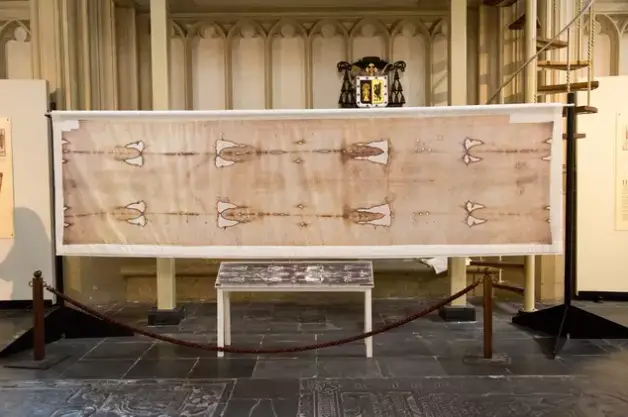The Shroud of Turin remains a valuable religious relic for many Christians and one of the most well-studied artifacts in history.
Many believe it is the clothing Jesus Christ was wrapped in following his crucifixion, and scientists have long debated its authenticity.
This famous stretch of holy linen cloth, which is kept in the Cathedral of Saint John the Baptist in Turin, Italy, hence the name, is said to feature the faint of image of the Son of God.

Now, biblical scholar Dr Jeremiah Johnston claims to have verified some of the blood on it as human. According to him, a testing from the 1990s identified blood type AB on the Shroud.
“The Shroud has type AB blood, identified as Semitic, present in only six percent of the population, confirmed as human and male, ruling out animal blood or a hoax,” Dr Johnston told the Tucker Carlson Network.
Further, he noted that testing showed it was human, male blood that was both premortem and postmortem.
“You would have to actually kill someone if you were trying to reproduce the shroud because we have premortem and post-mortem blood all over the shroud,” he explained.

The fact that the Shroud contains traces of both pre- and post-mortem blood is highly unusual, indicating processes that differ from what would be expected in natural decay. For some, this detail supports the idea of resurrection.
This comes after an AI program revealed a possible image of the face of Jesus Christ using the imprint found on the Shroud.
However, despite the blood found on it being identified as authentic human claret, the Shroud of Turin remains controversial since some analysis claim it was made some time between 1260 and 1390, and since we’ve stated counting the years based on Jesus himself, it makes it too recent to be genuine. On the other hand, later studies questioned that analysis, saying the sample tested might have been from a repaired section, not the original cloth.
Please SHARE this article with your family and friends on Facebook.
Bored Daddy
Love and Peace
